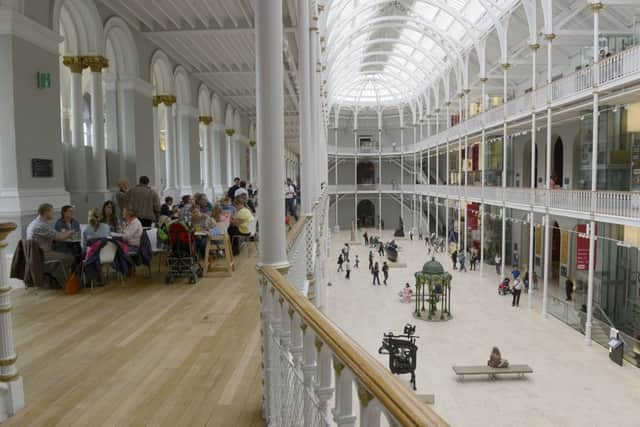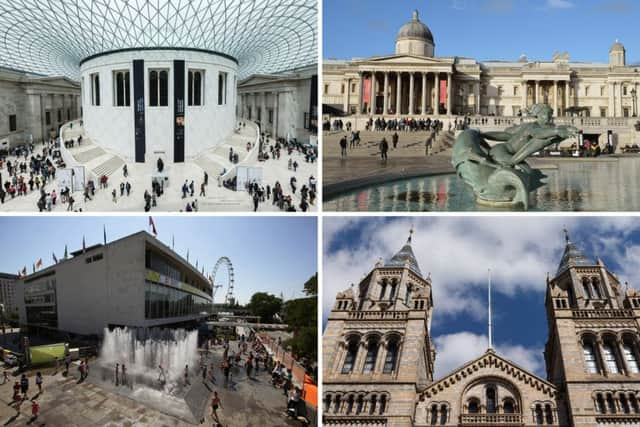Joe Wilson: In defence of '˜annoying' museum visitors


We’ve all been to museums during busy periods. In times like these, fellow visitors’ capacity to annoy us greatly increases. Not content to leave their ill will in the gift shop, though, is Time Out, who recently published an article called “Top Five Annoying People in Museums.” Museums should be a forgiving environment. Despite my own frustrations, I’m compelled to make a case for the defence.
The first on their hit list in is the “primary school gremlin.” I was fortunate in my childhood to have been regularly taken to the National Museum of Scotland by my parents. Some children are not so lucky, and it’s important that primary schools introduce young people to museums. This is especially true of national institutions; they belong as much to them as they do to you. I will never begrudge a child, no matter how gremlin-like, a visit to their museum.
Advertisement
Hide AdAdvertisement
Hide AdSecond on the list is “the know-it-all,” who, as Time Out put it, “like to spend long afternoons in museums imparting nuggets of wisdom on [their] specialist subject.” The author’s real issue here seems to be with the pomp and pretence with which the “know-it-all” insists upon assisting. Looked at in another light, though, and you’ll find yourself approached by a fellow visitor who is genuinely knowledgeable on a subject, with a desire to serve your interests rather than their own. We go to museums to learn after all, so why turn down the chance to do so?


I would instead warn against someone I’ll call “the fraud,” who masquerades as the “know-it-all” despite knowing very little. I met someone who once insisted that a Max Ernst painting in the Peggy Guggenheim Collection, in Venice, was likely the work of famed art forger Wolfgang Beltracchi. (I told him that the collector had been married to the artist for five years and was even suspected to be the subject of the piece.) I later learned that a colleague had had an identical encounter with him elsewhere in the museum.
Number three on Time Out’s list is “the teenage sceptic,” a huffy high-schooler more interested in girls than anything the museum has to offer. I actually think this is preferable to the pretentious philosophical sceptic the name suggests, deep in the midst of an existential crisis. If he happens to take a shine to the girl in the museum. then good for him – her presence suggests she’s interested in things other than herself, unlike the one whose “gym progress” selfies he spends all day “liking” on Instagram.
Lazily slotted in at number four is “the cultural castaway.” This is essentially someone trying but struggling to learn in the museum. I fail to see how this can be annoying, unless they are badgering you with questions. But why not then become the sincere informant discussed earlier? If you are equally at a loss, then be polite. Nobody should be chastised for trying to educate themselves, especially when they are making use of a public service designed for that very goal.
Last in the firing line of course is that eternal scapegoat, the tourist. That they have as much right to be there as anyone else goes without saying, but the museum represents them as much as it does the locals. For example, the British Museum considers itself a “museum of the world, for the world,” and its retention of contested objects such as the Parthenon Marbles and Benin Bronzes is predicated on the claim that it offers the best platform for the “world” to come and visit them. Tourists therefore are not just welcome, but they are necessary in order to justify the collection.


To be fair to Time Out, number five on their list is specifically “the tourist tool,” who spends their entire visit with their noses pressed into their cameras. On this issue I concede. There is no need to take photographs of literally everything on display, and to answer the question posed by the author: they are within their rights to do so, but no, it is absolutely not the best use of their time. (Nothing sucks you out of a museum experience quite like an obnoxious cacophony of faux shutter sounds.)
There is no venom in the fangs of Time Out’s article – it’s clearly just a bit of fun. All the same, it’s important to re-establish that museums are intended to be fun, too. Let people enjoy them.
Advertisement
Hide AdAdvertisement
Hide Ad• This is an edited article from I Think Of Icarus, a museum blog run by Glasgow-based writer Joe Wilson.http://ithinkoficarus.com